
How Do Hallucinogens, Dissociatives And Delirium-Inducing Drugs Differ From Each Other
When most people think of trippy drugs, they automatically think of acid and shrooms. But this category of substances is actually very broad and encompasses a variety of different drugs that fall into three different subcategories: hallucinogens, dissociatives, and deliriants.
Hallucinogens, commonly known as psychedelics, are by definition a class of drugs that cause visual, auditory and sensory hallucinations. They can be found in nature, as is the case with mushrooms and peyote. Active ingredients can be extracted from plants, fungi and roots, or they can be man-made. Dissociative hallucinogens, which include PCP and ketamine, work against the N-methyl-D-aspartate (NMDA) receptors in the brain.
The difference between dissociative drugs and classic hallucinogens is a notable feeling of depersonalization, the sensation of being outside one’s own body. Last on the list are the deliriants like Benedryl and benzodiazepines, which are a somewhat unpopular class of drugs to use recreationally. When used in excess, deliriants are known to induce vivid and rather unpleasant hallucinations, hence their unpopularity compared to shrooms, acid and even ketamine.
COMMONLY USED HALLUCINOGENS
Psychedelics popularised throughout the 1960’s to 70s are the most widely used hallucinogens and rightfully so. Not only is the high more pure and uplifting than what you would experience from the other types of drugs on this list, they're also the safest. These types come with low rates of addiction and virtually no negative long-term health effects. Some individuals even report feeling like a newly improved version of themselves after a good acid or shroom trip.
LSD
LSD, also known as acid, blotter or doses, is one of the strongest hallucinogens available. It's a clear, odourless, water-soluble compound extracted from rye fungus.
SHROOMS
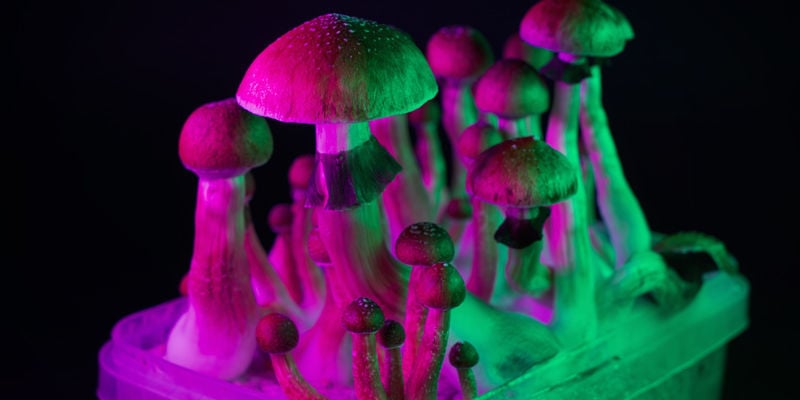
Shrooms/magic mushrooms/psilocybin refers to certain species of mushrooms found in Mexico, South America and the United States. Shrooms have a long history that dates back thousands of years. In the past, they were used in religious and spiritual ceremonies by indigenous cultures; these days, shrooms are mostly used recreationally or microdosed for health benefits.
Magic Mushrooms can be eaten raw, mixed with other foods or brewed into a tea. By the way, the easiest way to make a flavourful mushroom tea is to add your shrooms (preferably crushed up) into a pot of hot water (no hotter than 50°C otherwise the trip-inducing agents will degrade) and let them steep for about 15 to 20 minutes. Afterwards, you strain out the mushrooms, add a tea bag (whatever flavour you prefer) and simmer for a little while longer.
PEYOTE
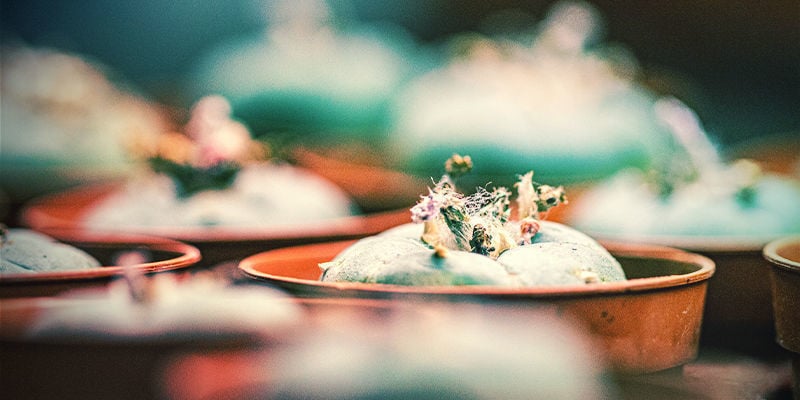
Peyote is another very popular psychedelic. Think Jim Morrison tripping out in the Sonoran desert.
Also referred to as buttons and mescaline, peyote is a small cactus that grows in Southern Arizona, Southern New Mexico and throughout the Sonoran region of Northern Mexico. The top part of the cactus has small, circular buttons that are cut out, dried and either chewed, soaked in water or brewed with tea.
COMMON DISSOCIATIVE AND DELIRIUM DRUGS
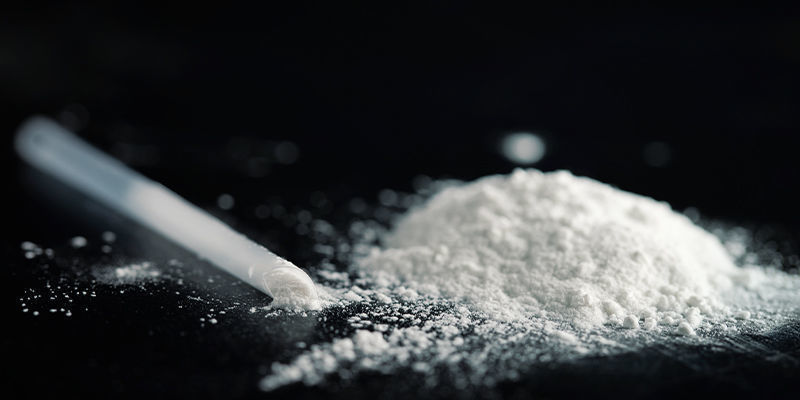
PCP (Phencyclidine) was created in the 1950s to be used as a general anaesthetic for surgery but was eventually outlawed. Today, it is only used recreationally. It can be found in a variety of forms, including tablets, capsules, liquid or powder. This allows it to be consumed in myriad ways, such as snorting, injecting, smoking or eating.
Another drug that's been gaining popularity is ketamine, cleverly nicknamed "Special K." What initially started out as an anaesthetic for both humans and animals is now often stolen from veterinary offices and sold on the street.
No list of trippy drugs would be complete without the mention of cough syrup, also known as DXM or robo. This is one of the most frequently abused hallucinogenic drugs by teens and young adults.
Delirium-inducing drugs, which aren't very popular due to the unpleasant feelings and hallucinations they produce, include atropine, scopolamine (hyoscine), diphenhydramine (Benadryl) and benzos (benzodiazepine).
WHAT ARE THE EFFECTS OF EACH?
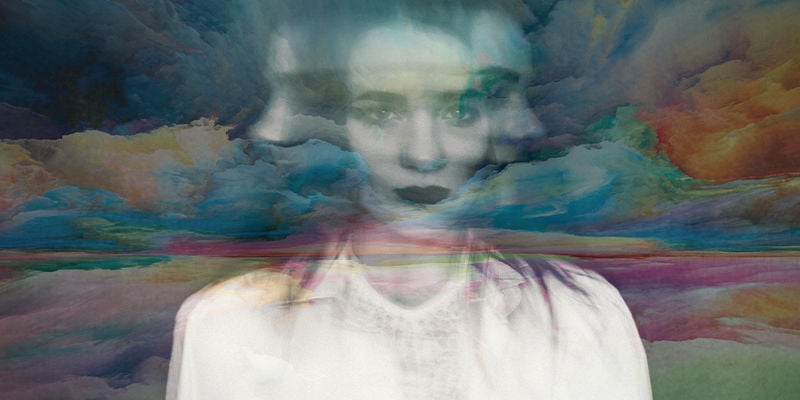
The short-term effects of hallucinogens include, well, hallucinations that can last up to 12 hours. But when it comes to tripping out, the experience can go one of two ways. It can be a good trip, which is usually mentally stimulating, fun and inspiring, or, you could have something called a bad trip.
A bad trip can be an absolute nightmare, inciting feelings of fear, anxiety and despair. Naturally, how your high unfolds all depends on how much is ingested, the user's personality, mood, metabolism and what's going on in the immediate surroundings. Below are some other short-term effects specific to each substance.
LSD
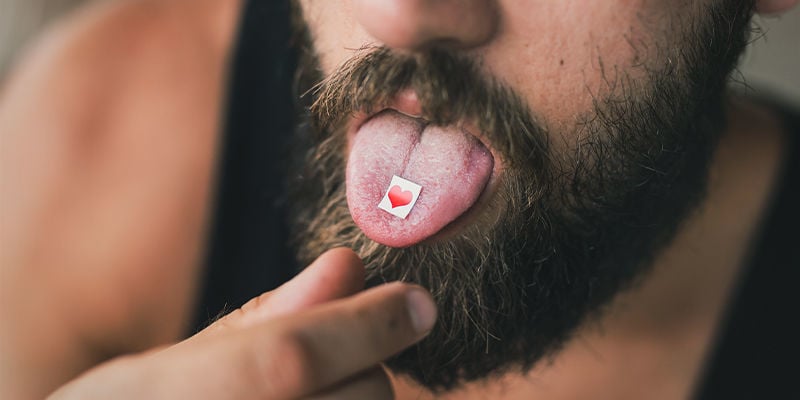
- Increased blood pressure, heart rate and body temperature
- Dizziness and sleeplessness
- Loss of appetite, dry mouth and sweating
- Numbness, weakness and tremors
- Impulsiveness
- Rapid emotional shifts
Psilocybin
- Feelings of relaxation (similar to the effects of smoking cannabis)
- Nervousness, paranoia and panic reactions
- Introspective/spiritual experiences
- Poisoning if the mushroom is misidentified and the wrong one is consumed
Peyote
- Increased body temperature and heart rate
- Uncoordinated movements (ataxia)
- Excessive sweating
- Feeling flushed
Dissociative drugs (Ketamine, PCP, Cough Syrup, etc.) also produce visual and auditory hallucinations, but they're accompanied by feelings of complete detachment from reality. Other short-term effects include anxiety, memory loss, impaired motor function, seizures or severe muscle contractions and even aggression and violent tendencies.
Delirium-inducing drugs have some rather unpleasant symptoms as well. In addition to the miserable high, they're also known to cause tachycardia, hyperthermia and even heart failure. There have been very few studies performed on the long-term effects of these types of drugs.
SO WHICH ONE IS SAFEST?
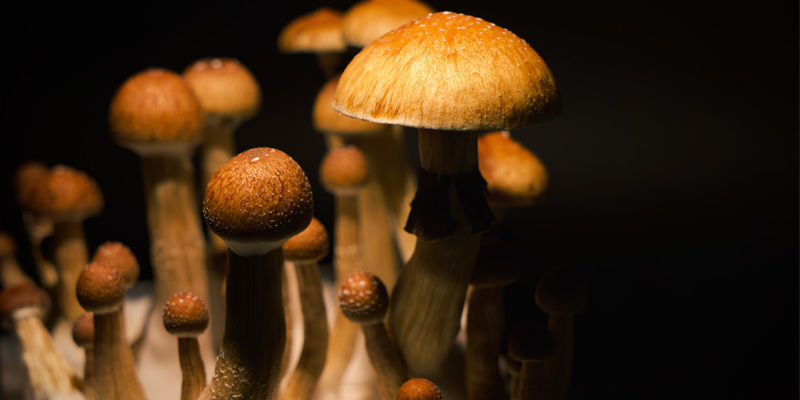
According to recently completed research, magic mushrooms are the absolute safest recreational drug. The study conducted by the Global Drug Survey surveyed over 120,000 people to uncover the rates that emergency room visits were required after using different drugs. The rates of reported ER treatment for magic mushrooms were over five times lower than with other substances.
Furthermore, a research team called the Independent Scientific Committee on Drugs (ICSD) led by David Nutt, MD, Imperial College of London, tested 20 different drugs on a scale that accounts for a variety of possible dangers imposed on society. Once again, shrooms won that survey as well. This makes it hard to deny that psilocybin the safest drug in the world for users and society.
-
 6 min
18 June 2021
The Six Types Of Hallucinations You Can Experience
We all know that psychedelic drugs can cause hallucinations, but what about the other causes? Mental illness, sleep deprivation, and even certain foods can trigger hallucinations as well. Ranging...
6 min
18 June 2021
The Six Types Of Hallucinations You Can Experience
We all know that psychedelic drugs can cause hallucinations, but what about the other causes? Mental illness, sleep deprivation, and even certain foods can trigger hallucinations as well. Ranging...
-
 8 min
16 July 2020
LSD 101: An Overview
A comprehensive guide on LSD for anyone looking to gain a first impression of the drug. We cover LSD’s discovery and history, and its impact on art and culture. You will learn about the effects of...
8 min
16 July 2020
LSD 101: An Overview
A comprehensive guide on LSD for anyone looking to gain a first impression of the drug. We cover LSD’s discovery and history, and its impact on art and culture. You will learn about the effects of...
-
 2 min
15 November 2014
The Long-Term Effects of Peyote Use on the Brain
Peyote has been used for entheogenic practices for thousands of years - but what effect does such use have on the brain?
2 min
15 November 2014
The Long-Term Effects of Peyote Use on the Brain
Peyote has been used for entheogenic practices for thousands of years - but what effect does such use have on the brain?





 United States
United States











